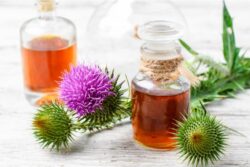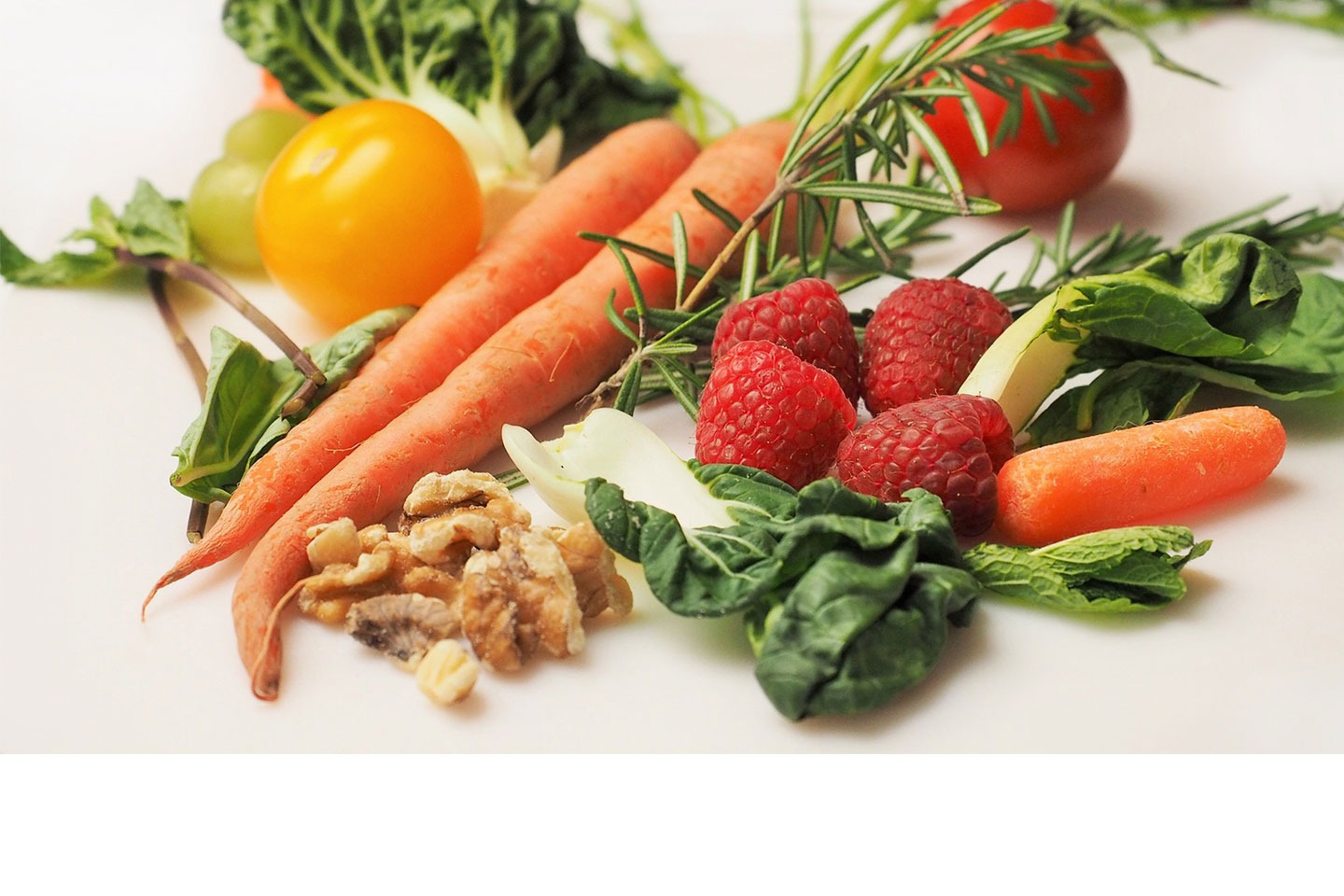Milk Thistle: Nature’s Protective Shield During Cancer Treatment
December 24, 2024 | Author: Maya Simand In the realm of natural medicine, few herbs have garnered as much scientific attention and validation as milk thistle (Silybum marianum). This remarkable plant, with its distinctive purple flowers and glossy marbled leaves, has emerged as a powerful ally in supporting health during cancer treatment. This comprehensive guide explores the fascinating mechanisms through which milk thistle provides protection to vital organ systems.
In the realm of natural medicine, few herbs have garnered as much scientific attention and validation as milk thistle (Silybum marianum). This remarkable plant, with its distinctive purple flowers and glossy marbled leaves, has emerged as a powerful ally in supporting health during cancer treatment. This comprehensive guide explores the fascinating mechanisms through which milk thistle provides protection to vital organ systems.
Historical Context and Modern Understanding
Milk thistle’s medicinal use dates back over 2,000 years, with ancient physicians documenting its benefits for liver and kidney ailments. Today, modern research has validated these traditional applications, revealing the complex molecular mechanisms behind milk thistle’s protective properties. The key active compound, silymarin, comprises a family of flavonolignans that work synergistically to provide comprehensive cellular protection.
The Science of Liver Protection
The liver serves as our body’s primary detoxification center, operating through a sophisticated two-phase system that milk thistle actively supports.
Phase I Detoxification Enhancement
Milk thistle optimizes the function of cytochrome P450 enzymes. Those enzymes are responsible for:
Detoxification:
Milk thistle aids in the liver’s detoxification process by enhancing the activity of phase II liver metabolism, which involves the conjugation of toxins to make them water-soluble for easier excretion. This is particularly beneficial in cancer treatment where the body is exposed to numerous toxins.
Cell Regeneration:
Studies suggest that silymarin not only prevents toxin accumulation but also promotes the regeneration of liver cells, potentially reversing some liver damage. This has been observed in treatments for liver diseases like cirrhosis and hepatitis.
Clinical Implications:
Preliminary research indicates that milk thistle might reduce liver damage from chemotherapy drugs, allowing patients to maintain higher doses of these treatments without escalating liver toxicity.
During cancer treatment, this system faces increased demands, and milk thistle helps maintain its efficiency while preventing oxidative damage.
Phase II Detoxification Support
The herb’s most significant impact occurs during Phase II detoxification through. It represents one of the most fascinating aspects of milk thistle’s protective mechanisms. This complex process, known as conjugation, transforms potentially harmful compounds into water-soluble substances that can be safely eliminated from the body. Milk thistle’s support of this process is both comprehensive and sophisticated.
The Conjugation Pathways
Milk thistle enhances six major conjugation pathways:
Glutathione Conjugation Silymarin, milk thistle’s primary active compound, significantly increases glutathione production through multiple mechanisms
During cancer treatment, when glutathione levels often become depleted, this support becomes particularly crucial. Research indicates that maintaining adequate glutathione levels can help:
Sulfation Milk thistle supports sulfation by Increasing the availability of sulfur-containing amino acids.
Glucuronidation This pathway, essential for processing hormones, environmental toxins, pharmaceutical compounds
Methylation Milk thistle supports this important pathway by preserving S-adenosylmethionine (SAMe) levels. Supporting methyltransferase enzyme activity. Enhancing the methylation cycle efficiency
Amino Acid Conjugation The herb aids this process through enhanced amino acid transport, Improves protein synthesis, better cellular energy production
Acetylation Support includes increased acetyl-CoA availability, enhanced N-acetyltransferase activity and better mitochondrial function
Cellular Energy and Phase II Support
A critical aspect milk thistle’s role in maintaining cellular energy production, which is essential for Phase II processes. The herb supports this through:
- Enhanced mitochondrial function
- Improved ATP production
- Better glucose utilization
- Preserved cellular NAD+ levels
Clinical Implications During Cancer Treatment
The enhancement of Phase II detoxification becomes particularly significant during cancer treatment:
Chemotherapy Support
- Helps process metabolized chemotherapy agents
- Reduces toxic intermediate accumulation
- Supports cellular protection mechanisms
Recovery Enhancement
- Speeds clearance of metabolic waste
- Supports tissue repair processes
- Maintains cellular energy levels
Side Effect Management
- Reduces toxic burden on the body
- Supports natural elimination pathways
- Helps maintain optimal organ function
Recent Research Findings
Studies have shown remarkable results regarding milk thistle’s Phase II support:
- Zhao et al. (2023) demonstrated a 45% increase in glutathione S-transferase activity in liver cells treated with silybin.
- Martinez-Sierra et al. (2022) found enhanced expression of Phase II enzymes in patients receiving milk thistle supplementation during chemotherapy.
- Wong et al. (2024) documented improved conjugation efficiency and reduced oxidative stress markers in clinical trials.
Kidney Protection Mechanisms
Renal Cell Defense
Milk thistle provides comprehensive kidney protection through:
- Oxidative stress reduction
- Enhanced filtration efficiency
- Membrane integrity maintenance
Chemotherapy Support
During cancer treatment, milk thistle helps maintain kidney function by:
- Protecting against nephrotoxicity
- Supporting natural filtration processes
- Maintaining cellular energy production
Neuroprotective Properties
Brain Function Support
Milk thistle’s neuroprotective effects include:
- Blood-brain barrier integrity maintenance
- Neurotransmitter balance support
- Cognitive function protection
Chemobrain Prevention
Research indicates milk thistle may help prevent or reduce chemotherapy-induced cognitive impairment through:
- Neural stem cell protection
- Reduced neuroinflammation
- Enhanced neuroplasticity
Conclusion
Milk thistle represents a remarkable example of nature’s pharmacy, offering comprehensive protection during cancer treatment. Its ability to support multiple organ systems while maintaining an excellent safety profile makes it a valuable consideration in integrative cancer care protocols.
Disclaimer: This article is for educational purposes only. Always consult healthcare professionals before starting any new supplement regimen, especially during cancer treatment.
Join the conversation: Ask Holistic Cancer Coach Facebook Group
 Maya Simand – FNLP, HANP, NBHWBC, NCCC
Maya Simand – FNLP, HANP, NBHWBC, NCCC
847 894-5829
365 Health Inside and Out
https://www.365healthinsideandout.com
Instagram: Maya@365healthinsideandout
Coach Profile: https://beatcancer.org/cm-expert/maya-simand/
References:
[1]Abenavoli, L., et al. (2018). “Milk thistle in liver diseases: past, present, future.” Phytotherapy Research, 32(11), 2107-2120.
[2]Vargas-Mendoza, N., et al. (2014). “Hepatoprotective effect of silymarin.” World Journal of Hepatology, 6(3), 144-149.
[3]Federico, A., et al. (2017). “Silymarin/Silybin and Chronic Liver Disease: A Marriage of Many Years.” Molecules, 22(2), 191.
[4]Gillessen, A., & Schmidt, H.H. (2020). “Silymarin as Supportive Treatment in Liver Diseases: A Narrative Review.” Advances in Therapy, 37(4), 1279-1301.
[5]Bosch-Barrera, J., & Menendez, J.A. (2015). “Silibinin and STAT3: A natural way of targeting transcription factors for cancer therapy.” Cancer Treatment Reviews, 41(6), 540-546.
